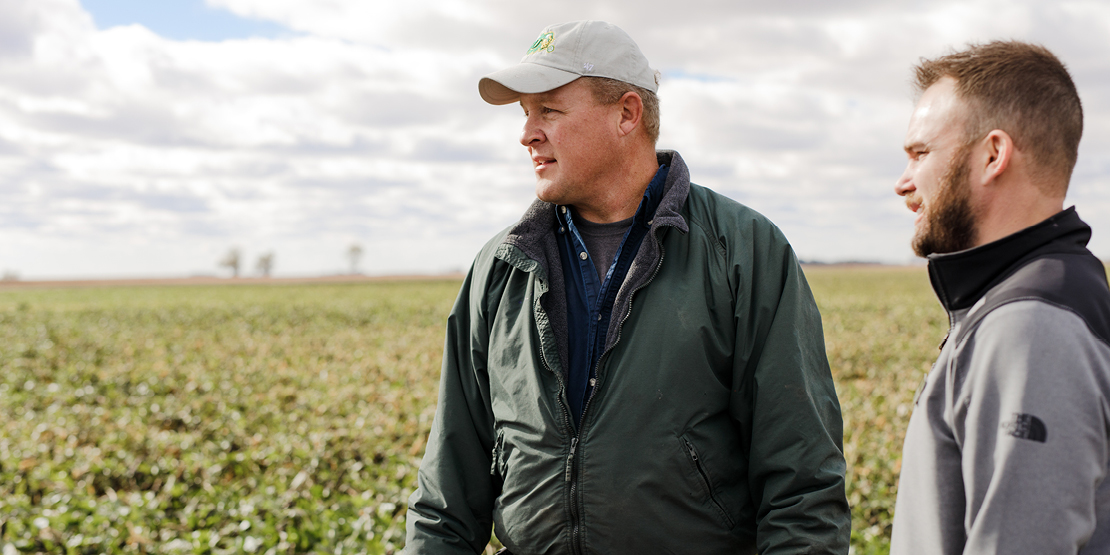Protecting Your Crop from Unpredictable Weather
The one consistent thing about agriculture is that it’s inconsistent. The weather is always unpredictable. Because of the high risk of investment, farmers need to protect their crop from unpredictable weather. Creating a crop insurance plan that is resilient every year despite constantly changing weather patterns requires a knowledgeable partner that will be by your side long before the first seed is planted.
Choice’s crop insurance team takes a comprehensive approach to building a crop insurance plan that perfectly addresses farmers’ specific needs to protect and maximize their crop.
Deadlines
There are several key dates during the spring growing season:
Sales Closing Date: March 15, 2024
Farmers need to select their coverage by this date. Choice’s crop insurance advisors use their insight and experience to tailor a plan that addresses the anticipated weather and farmers’ harvest goals.
Production Reporting Date: April 29, 2024
Farmers must report the prior year’s crop production.
Acreage Reporting Date: July 15, 2024
Farmers must report what they planted for the current year, where it’s planted, and how many acres. Choice has the ability to use precision technology for acreage reporting and production reporting, which simplifies the process for farmers and provides benefits to their actual production history yield (APH), guarantee, and premium cost.
Multi-Peril Crop Insurance
“Multi-peril crop insurance (MPCI) covers farmers crops against many different perils, whether it be various weather events such as excess rain or drought, disease, or natural disasters,” said Jason Tryan, Insurance Manager
Newer MPCI coverage options add yield protection and price protection to guard farmers against potential loss in revenue due to low yields or changes in market price.
“Farmers should look at their multi-peril policy as risk protection for their operation,” said Bryce Messner, Crop Insurance Advisor. “What coverage plans and options will provide them with the best protection, and how do we increase that protection in the best way possible.”
Hail Coverage
“If farmers see a hailstorm coming, they call us and have hail coverage on their crops within two hours,” said Val Walker, Insurance Manager.
In addition to MPCI, there are private products that can increase insurance coverage. The most common is hail insurance. Hail products range from covering small storms to the big storms that destroy the entire crop. Availability of your agent can be a make-or-break situation in a hail decision.
A farmer needs to know that they’re able to get ahold of their agent and have coverage in place as soon as possible. If a farmer is hesitant about opting for hail insurance early in the season, it’s important to go through options with an agent before the storm clouds are coming.
Just like hail products, there are also products for wind. It’s essential to go over these options with a crop insurance agent to ensure your crop is effectively covered for an affordable amount.
Planting Dates
The Risk Management Agency, a division of the USDA, sets the initial planting dates for each crop and county. Farmers may be ready to plant before this date. There’s no problem with farmers planting early, they just have to know what the initial planting date is on their insurance policy.
For example, if the ground frosts over or the crop doesn’t come up, the policy will pay to replant those acres. But if you plant before the initial planting date, you forfeit that replant coverage.
Prevented Planting
“There are many different aspects of a farming operation that have exposure and multiple ways to insure all of it,” said Darren Thielges, Insurance Manager. “One crop insurance plan does not fit all farmers.”
While it is important to maximize coverage on planted crops, it is just as critical to maximize the coverage on crops you aren’t able to plant. The prevented planting provision ensures farmers get paid on unplantable acres, like excessively wet soil.
If the growing season is predicted to be wet, farmers may want to shift their coverage toward unplantable acres. But in a dry year, farmers may want to rely less on protecting unplanted acres and adjust coverage to protect planted acres.
Choice’s crop insurance agents are experienced in many facets of the agricultural industry and use this knowledge to create a personalized coverage plan and provide information on other agricultural affairs.
It’s important for farmers to assess their farming operation every year to address any changes or increase their coverage. Meet with our crop insurance team today to learn how you can maximize your crop coverage.
For more information on crop insurance or to find an ag expert near you, click here.



